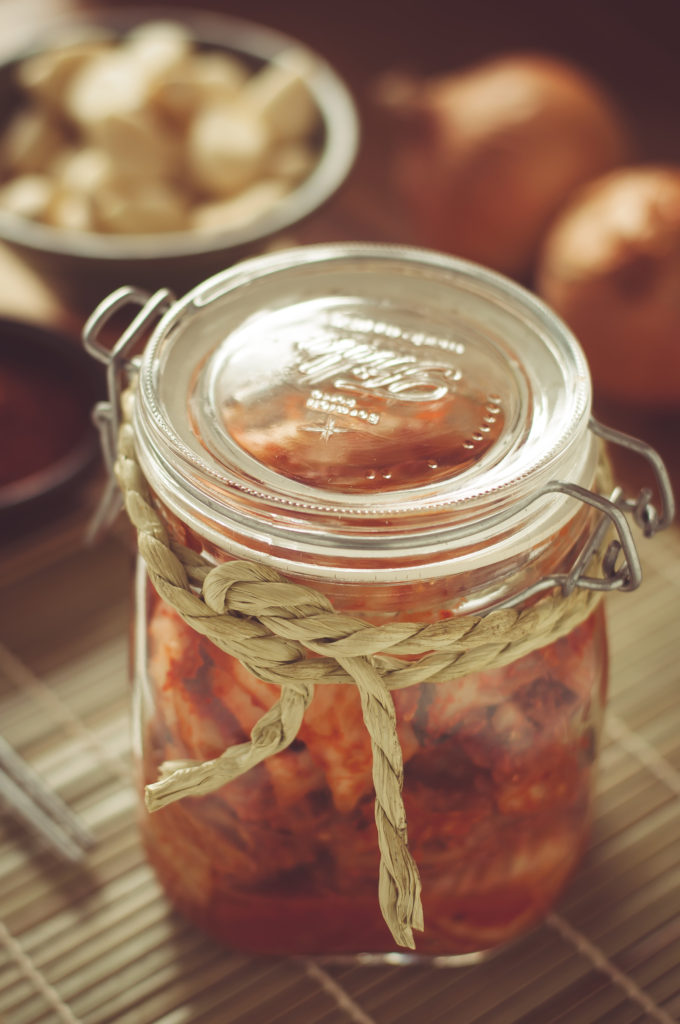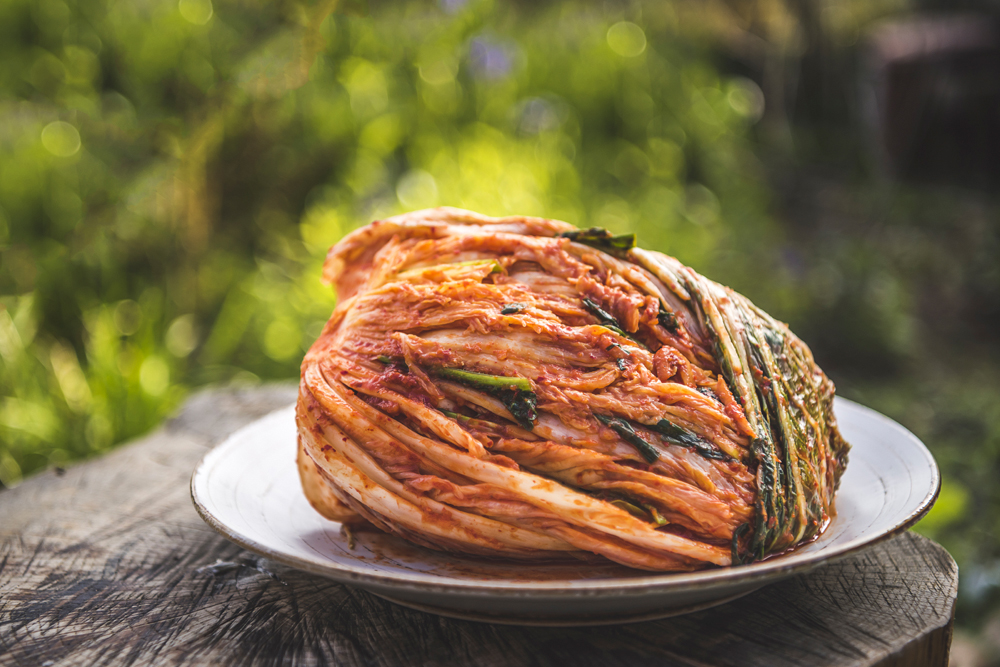Quick Kimchi
Written and photographed by Joe Wabe
No Korean meal can be complete without the savory companion of kimchi side dishes. As we prepare to enter the cool and colorful Korean fall, and enjoy the deliciousness of food prepared for Chuseok (추석), I’ve decided to round up a quick kimchi recipe for those who’ll stay home and wish to learn the art of homemade kimchi. It’s easy and fun to put together.
There are currently more than 200 different variations of kimchi, but the most popular known worldwide is baechu-kimchi (배추김치), or spicy napa cabbage, seasoned with chili powder, green onions, garlic, ginger, and salted seafood, among other ingredients.
According to Wikipedia, the origin of kimchi dates back at least to the early period of the Three Kingdoms (37 B.C.‒7 A.D.), when many kinds of fermented foods were widely available; however, early records of kimchi don’t mention garlic or chili pepper, which are now standard ingredients. Chili peppers originated in the Americas and were introduced to East Asia by Portuguese traders around the 17th‒18th centuries. It wasn’t until the 19th century that the use of chili peppers in kimchi became widespread. The recipes from the early 19th century closely resemble today’s kimchi.
Every region has a variation of kimchi, and this regional classification dates back to the 1960s and contains plenty of historical facts, but the current kimchi-making trends in Korea are generally different from those written in national records. New trends and globalization have given birth to all kinds of creative forms of kimchi that have reached beyond the Korean Peninsula, where even unusual vegetables like broccoli and asparagus are used to make kimchi.
My recipe comes from one of the best places for food in Jeollanam-do ‒ Jangheung ‒ a place well known for its distinctive food culture. It’s a recipe that I was introduced to about six years ago, and one that, up to this day, I’m still devoted to. I hope you can enjoy it as much as I have.

Ingredients
2 nappa cabbages
½ apple (peeled)
5 garlic cloves
1 ginger root (peeled)
12 dried red chili peppers
3 tablespoons of red chili pepper powder
4 green onions cut into two-inch lengths
½ cup of salty shrimp or saeu-jeot (새우젓)
½ small onion
2 tablespoons of sesame seeds
½ carrot
1 cup of water
¼ cup of sea salt
Instructions
Rinse and cut the cabbages into about two-inch lengths. Dissolve the salt in one cup of water, and in a large bowl, pour the salty water over the cabbages, and let it sit for about six hours or overnight.
The next day, drain the cabbages. In a blender, mix all the rest of the ingredients (except the green onions). Put the cabbages back in the bowl with the chopped green onions, and now pour and mix it all beautifully with the red pepper mixture. Pack the cabbages and the mixture in jars or containers, and let them sit in the fridge for two to three days, depending on how pickled you like your kimchi.
You can even eat it right away!
The Author
Joe Wabe is an established photographer and Gwangju local business entrepreneur. He has been contributing to the GIC and the Gwangju News for more than eight years.



